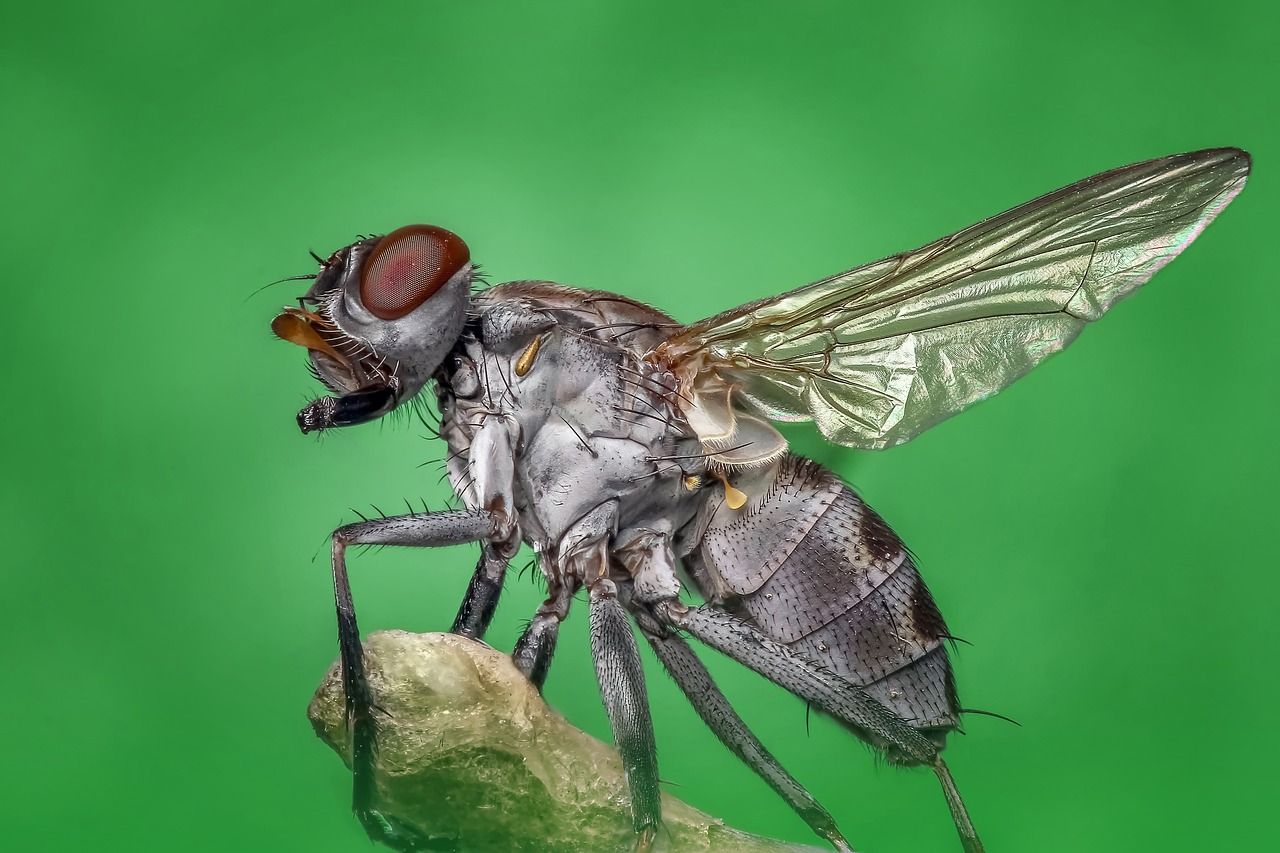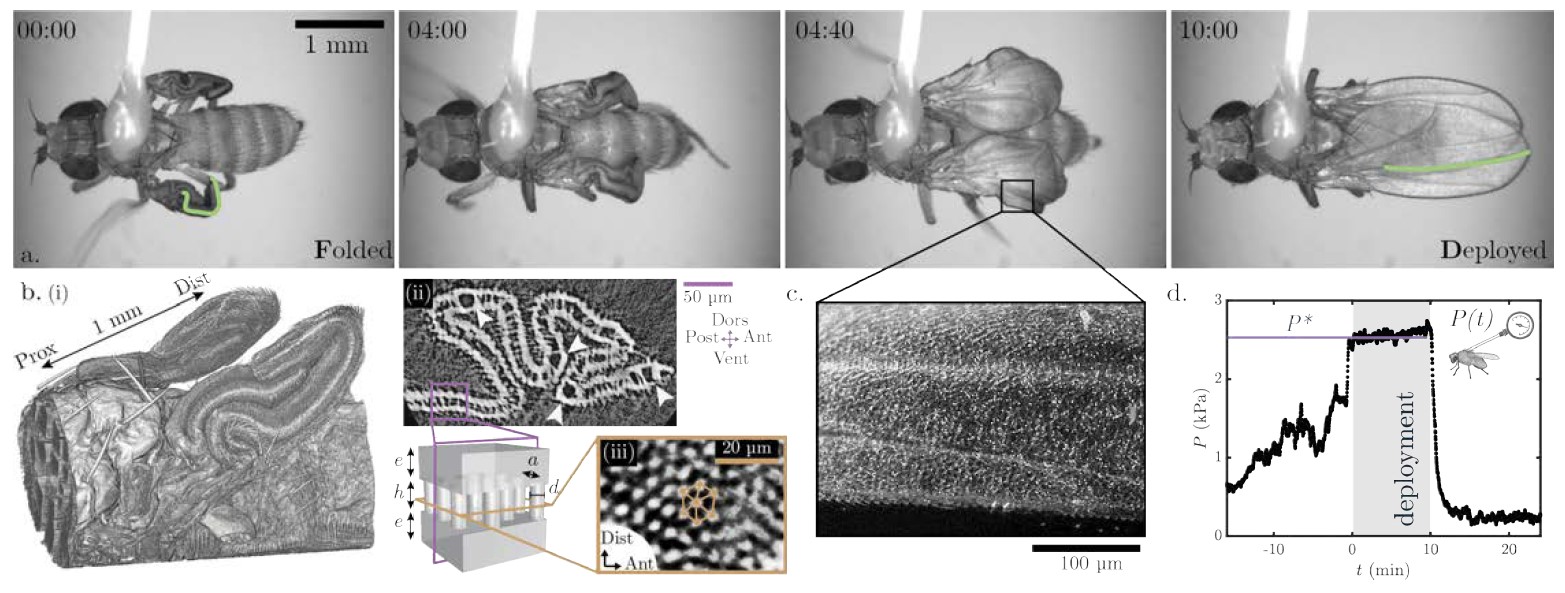Follow us on Google News (click on ☆)

Illustration image Pixabay
When a fly deploys its wings for the first time, it unfolds an origami-like structure into a rigid and functional surface. The mechanism responsible for this dramatic shape change was still largely unknown, and no physical model could account for it.
Researchers from the University Institute of Industrial Thermal Systems (IUSTI, Aix-Marseille University/CNRS), the Institute of Developmental Biology of Marseille (IBDM, Aix-Marseille University/CNRS), and the Institute of Research on Non-Equilibrium Phenomena (IRPHE, Aix-Marseille University/Centrale Marseille/CNRS), have conducted a mechanical analysis of this transformation and built a model that highlights the existence of an operating point used by the insect to deploy its wings.
To observe the wing deployment of an insect, the team worked with Drosophila, a small fly widely studied in developmental biology. Using a binocular magnifier, the macroscopic-scale process was first filmed: the two wings transform simultaneously, transitioning in about ten minutes from a folded 3D structure to a flat, deployed surface.
The internal organization of the wing before unfolding is revealed by an X-ray technique, microtomography, which allows the reconstruction of its 3D structure: the wing consists of two plates 6.5 µm thick, connected by a network of pillars 7.5 µm high, and is traversed by veins. At an even finer scale, electron microscopy reveals that each plate includes a single-cell layer, covered by a rigid layer initially folded. During wing deployment, the cells stretch while the folded layer unfolds without elongating, thus fixing the size of the final structure.

(a) Snapshots of Drosophila wing deployment.
(b) (i) X-ray microtomography of folded wings. (ii) Cross-section showing macroscopic folds, vein structure (white arrows), and internal pillars. (iii) Perpendicular section revealing the hexagonal organization of the pillars. The sketch summarizes the wing structure: two plates connected by pillars organized in a hexagonal network.
(c) Blood, visualized by fluorescent beads, is injected throughout the wing during deployment.
(d) Measurement of the internal pressure of an insect. Wing deployment occurs in the shaded segment at constant pressure.
© S. Hadjaje
Variations in blood flow pressure were measured during wing deployment: it is the rapid increase in this pressure that causes the unfolding, through hydraulic action, like in an inflatable mattress where pressure guides the expansion in the plane of two plates connected by pillars. The mechanical characteristics of the wing (strength, viscoelastic properties) were also measured.
A physical model, based on the wing structure and its mechanical properties, allowed for numerical simulations of the deployment process under the action of blood flow pressure. They revealed that the fly uses an operating point allowing for significant expansion with a relatively small pressure variation, thanks to the wing's geometry and the material's mechanical characteristics.
However, some aspects of the process remain to be elucidated, such as its irreversibility (once deployed, the wing does not fold back), or the flatness of the wing. More generally, is the described mechanism applicable to other insects?
Moreover, outside the field of biology, this research enriches the understanding of the mechanics of soft structures capable of changing shape. It thus opens new perspectives for applications in the field of deployable structures or flexible robotics.
References:
Mechanics of Drosophila wing deployment.
Simon Hadjaje, Ignacio Andrade-Silva, Marie-Julie Dalbe, Raphaël Clément, Joël Marthelot.
Nature Communications, December 11, 2024.
https://doi.org/10.1038/s41467-024-54527-0
Article available on the open archive base HAL